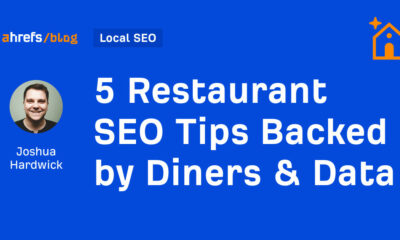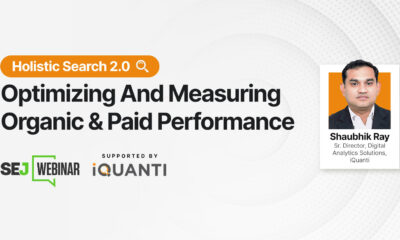MARKETING
3 tips to navigate the confusing martech marketplace

Have you noticed how some marketing technology vendors constantly change the narrative around their products to suit their go-to-market du jour, especially those that have been around for a while?
Over time, it looks something like this:
- It’s a browser-based content management and web development system.
- It’s a .NET CMS.
- It’s an enterprise website and intranet portal software.
- It’s a .NET web content management system (CMS), online marketing and intranet software.
- It’s a customer engagement platform.
- It’s a CMS for customer experience management.
- It’s an experience platform.
- It’s a platform to help you market in the context of customer interactions.
- It’s a content marketing platform.
- It’s a modern SaaS CMS.
- It’s a SaaS-based platform for headless content delivery.
- It’s the first entirely cloud-native CMS.
- It’s end-to-end digital experience software.
- It’s a composable digital experience platform.
Confusion instead of synergy
For third-party sellers, this creates countless problems. Long-time sellers who’ve been with the vendor for years are constantly dealing with new sales motions, struggling to keep pace with a go-to-market story that creates confusion in the marketplace instead of synergy.
New sellers climb aboard, hoping to capitalize on the vendor’s latest model and make bank. Not unexpectedly, these sellers struggle to connect with and convert prospects who have high expectations and are generally competent and intelligent. Instead of helping them make confident purchasing decisions, this approach creates buyer confusion, ultimately leading to hesitation and inaction, which results in the dreaded protracted sales cycle.
The example I’ve outlined above isn’t about brand extension — it’s an all-out identity crisis wrapped in brand confusion. Sure, the brand is having some issues, but no one else can figure out what it wants to be when it grows up, either.
Because of this, some martech vendors are often relegated to (*shudder*) commodity status. Not only have they created confusion with their prospects, but they’ve created confusion and diluted their brand in the marketplace.
What’s a CMO to do?
Despite the previously discussed challenges, if you’re patient, know where you’ve been (including the mistakes) and clearly define where you’re going and control the urge to buy martech tools like a kid in a candy store, you can navigate the less-than-optimal process and come out ahead. Here’s my advice.
1. Don’t fall in love so fast
Those flashy martech demos and smooth-talking salespeople can have you swooning in no time. The next thing you know, you’re locked into a multi-year deal on a martech tool that costs you a small fortune and doesn’t begin to serve your business, marketing, customer experience or technology needs.
Psychologists call this tendency to fall in love quickly “emophilia.” It can lead people to overlook red flags, leading to unhealthy relationships — and the last thing you want is an unhealthy martech vendor relationship.
2. Reject ‘martech promiscuity’
That’s right, I said it. This idea of a sprawling martech stack full of independent point solutions is so 1970s. Bigger is not always better, especially when it comes to your digital ecosystem. Challenge yourself and your team to limit your marketing technology tools to only those that directly solve your business and marketing objectives.
Start by defining, aligning and prioritizing your business goals for marketing, customer experience and marketing technology. This exercise clarifies your needs and priorities and helps you communicate effectively with the seller, helping them to show you how their solution aligns with your stated goals.
3. Go for a test drive
The beauty of the test drive is it offers utility for both the vendor and the customer. Think about it — a test drive is obligatory if you’ve ever visited an auto dealership when you were in-market for a car. It’s pretty hard not to buy once you’ve slid in behind the wheel and taken the car for a short ride.
In the case of procuring martech tools, the proof of concept, or POC, is about as close as you’ll get to a test drive. Work with the martech vendor to define the parameters of the POC to prove that their solution will produce the desired outcomes for your business, marketing team and customers. This may require a small investment as the vendor will likely recommend a partner to help formally define, design, develop and deliver the POC.
Additional resources
There’s a lot of confusion out there. Finding the right martech solutions for your business can be daunting, but plenty of experienced sages can help you navigate the labyrinth if you need a guide. Consider some of my proven strategies and tactics in previous articles here on martech.org.
Get MarTech! Daily. Free. In your inbox.
Opinions expressed in this article are those of the guest author and not necessarily MarTech. Staff authors are listed here.






![How to Create A Website to Sell Products In 8 Steps [+6 Expert Tips] How to Create A Website to Sell Products In 8 Steps [+6 Expert Tips]](https://articles.entireweb.com/wp-content/uploads/2024/10/1727868370_How-to-Create-A-Website-to-Sell-Products-In-8.webp-400x240.webp)
![How to Create A Website to Sell Products In 8 Steps [+6 Expert Tips] How to Create A Website to Sell Products In 8 Steps [+6 Expert Tips]](https://articles.entireweb.com/wp-content/uploads/2024/10/1727868370_How-to-Create-A-Website-to-Sell-Products-In-8.webp-80x80.webp)












You must be logged in to post a comment Login